Smart Irrigation Program Approved Drip Systems
Print Approved Designs(PDF, 997KB)
It’s important to put thought into your drip irrigation system when installing your new beautiful climate appropriate landscape. Drip tubing allows some freedom when working with plant positions; however, it is essential to follow the approved layout designs to ensure a well-managed drip irrigation system. Here are some tips to create a successful drip irrigation system:
- Sufficient coverage of drip tubing is important, but how much is too much? Ask yourself if the drip tubing is being water wasting in any area. This is often the case in a widely spaced garden with drip tubing weaving in and out of unplanted areas. One easy solution is to add more plant material. Another solution is to incorporate a few isolated drip irrigation sections instead of one large section for the entire garden.
- It is necessary to avoid plant-to-plant coverage with most drip irrigation designs. Circling drip tubing around each individual plant often delivers too much water to the already drought tolerant vegetation. Circular designs are only required for larger plants such as trees. Trees and some large shrubs require more water, thus the need to encircle the tubing around the base to increase the number of emitters per area. Only utilize circular patterns when large trees and shrubs are included in the garden project.
- Finally, make sure that you have enough drip irrigation coverage for your plants with a pre-planned design. Insufficient drip irrigation coverage also falls within ineligible designs. This is often the case when drip tubing is disregarded when installing a new landscape. When in doubt, maintain a grid system.
IMPORTANT: The Long Beach Utilities Department wants to ensure that our Lawn-to-Garden participants are getting the most out of the program and their beautiful climate appropriate garden. Therefore, the following rules will be enforced:
- Excessive water use resulting from drip irrigation tubing will result in an unpaid project and potential excessive water use fines.
- Projects which utilize excessive or inadequate drip tubing as determined by Long Beach Utilities Department staff will result in an unpaid project.
- Any other varied design layout that is not approved by the Long Beach Water Department will result in an unpaid project.
DRIP IRRIGATION SYSTEM DIAGRAMS
Drip Irrigation Control Zone Diagram
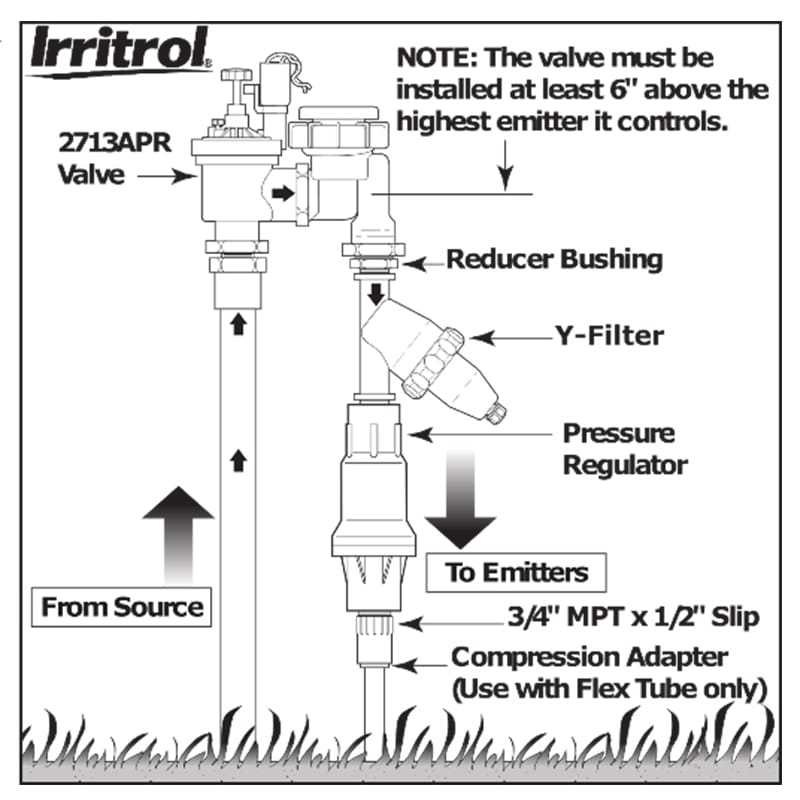
This great schematic illustration demonstrates the order in which control zone components should be installed with respect to the flow of water. If participants are using this diagram as a guide for installation, take note that some reducer fittings may be required to connect all three components. Installing a control zone kit exactly as illustrated here will ensure the efficiency of a drip irrigation system.
Common Drip Irrigation Design
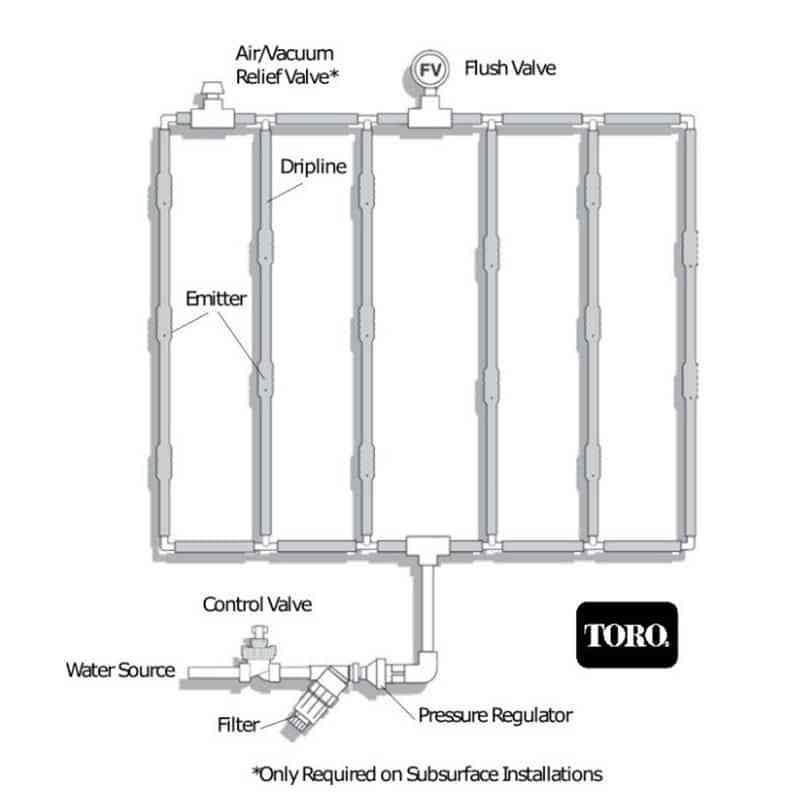
Illustrated is another fully enclosed design that is efficient with widely spaced plants. Keep in mind that enclosed layout designs only have one manual flush valve. This could lead to premature clogging if the drip tubing is not flushed periodically. Most drip irrigation projects will utilize a grid system as illustrated above. It allows the irrigation system to follow the contours of a yard while still providing enough water, making it a highly common and recommended method.
APPROVED LAYOUT DESIGNS
SMART IRRIGATION DESIGN TEMPLATE 1
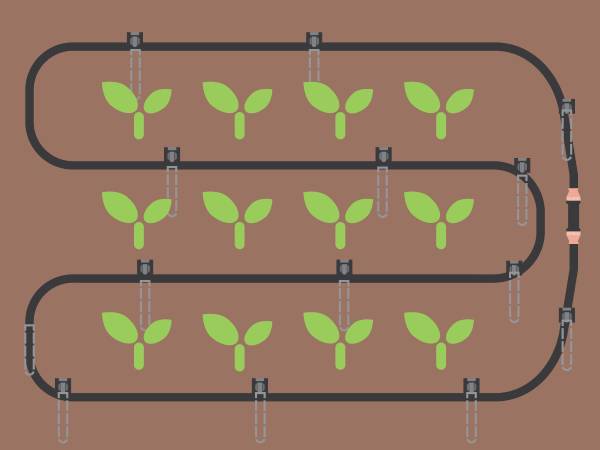
This fully enclosed design is optimal for widely spaced plants that are placed in gardens with odd shapes and sizes. Scattering plants to represent a natural environment is quite feasible with a design in this fashion. Layout 1 is a more simple design to install as it requires whole drip tubing segments and less connection fittings.
SMART IRRIGATION DESIGN TEMPLATE 2
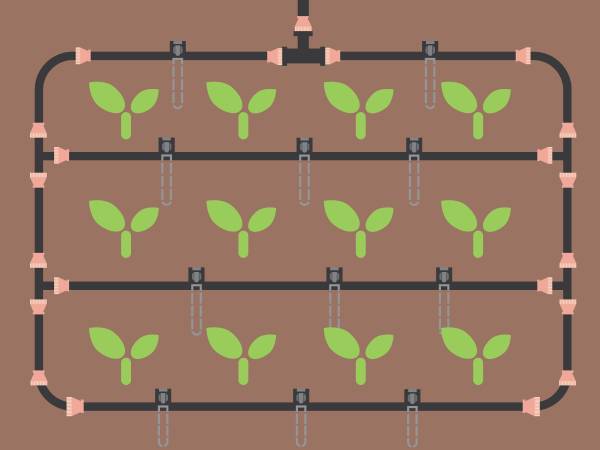
Illustrated is another fully enclosed design that is efficient with widely spaced plants. Keep in mind that enclosed layout designs only have one manual flush valve. This could lead to premature clogging if the drip tubing is not flushed periodically. Most drip irrigation projects will utilize a grid system as illustrated above. It allows the irrigation system to follow the contours of a yard while still providing enough water, making it a highly common and recommended method.
SMART IRRIGATION DESIGN TEMPLATE 3
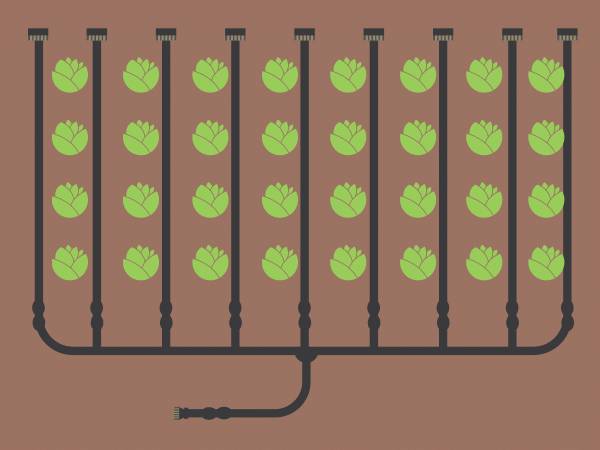
Open-ended drip irrigation designs are efficient when dealing with high density plant coverage. Incorporate layout 3 into the project if linear structures are a primary design element. They also allow for multiple flush valves which can deter any clogging within the drip line as long as they are manually operated on a routine basis. Open-ended layout designs do require additional components compared to a fully enclosed layout design. Each drip tube ending must be securely plugged.
SMART IRRIGATION DESIGN TEMPLATE 4
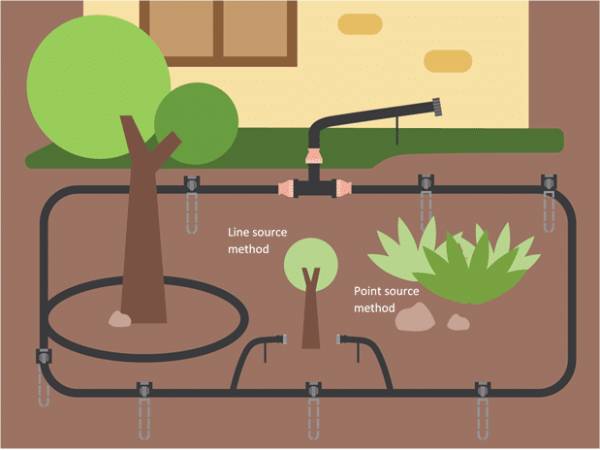
Drip irrigation settings often require multiple layout designs. The design in this picture demonstrates a point source and a line source method. When necessary, utilize a combined layout design if a garden includes a variety of plant types such as trees, shrubs, and ground cover.
SMART IRRIGATION DESIGN TEMPLATE 5
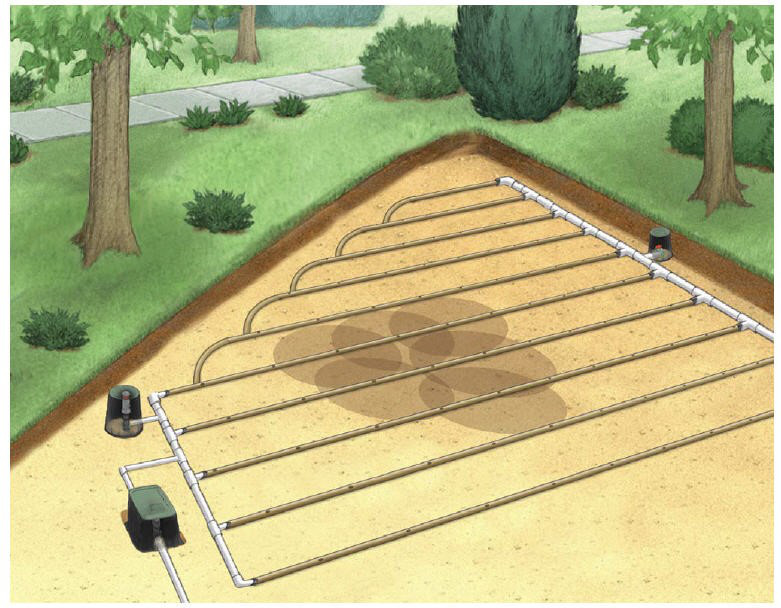
Drip tubing allows the design to accommodate for obstructive objects or oddly shaped yards. People installing drip irrigation may find they need to taper the design in one direction. This is a common method in a drip irrigation project and is an accepted layout in the program for reasons that it maintains a grid pattern, and avoids excessive usage of drip material.
SMART IRRIGATION DESIGN TEMPLATE 6
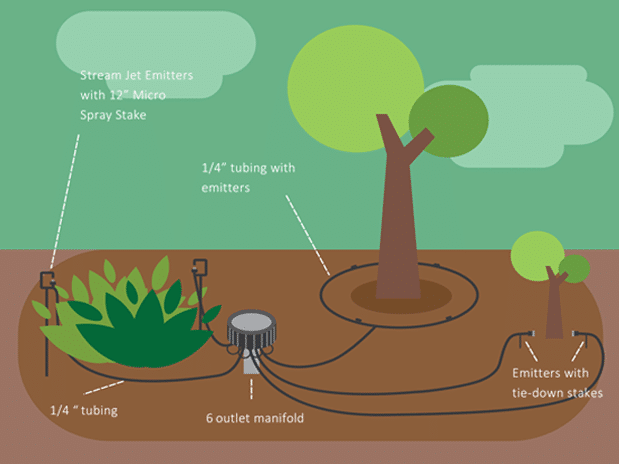
Layout 6 is another plant-to-plant drip irrigation design. Using a manifold device is accepted within the program as long as it is watering an appropriate amount of plant material. Plant-to-plant coverage and a manifold should be utilized in a widely spaced garden when there is larger but fewer plants. Additionally, a manifold component can be used to water larger trees and shrubs. It should not however, be used simultaneously with standard drip tubing designs. A garden will either require a common layout design such as a grid system or a manifold design depending on the plant coverage.